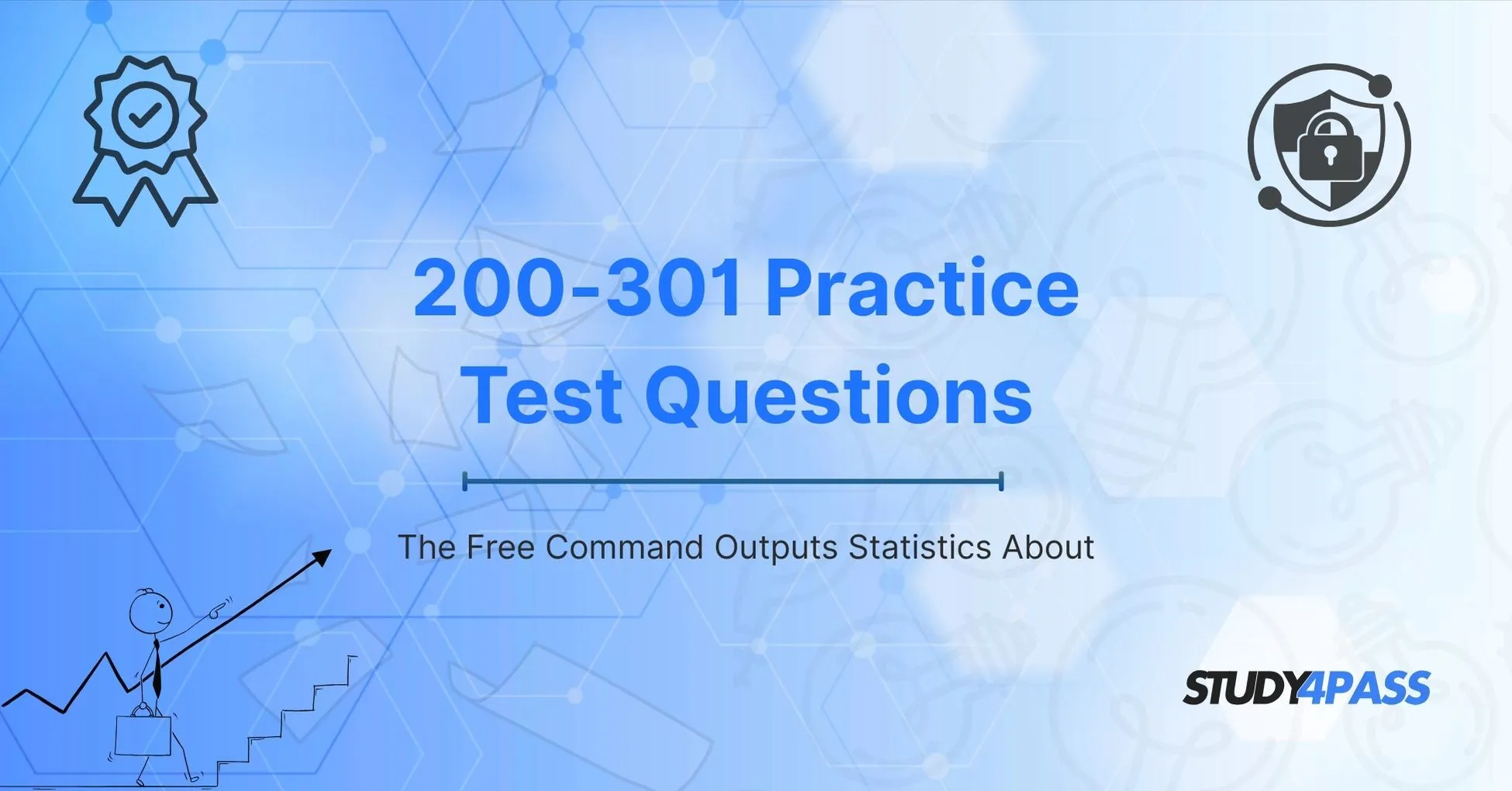Introduction To 200-301 Practice Test Questions
If you're preparing for the Cisco CCNA 200-301 exam, understanding Linux commands like `free` can be crucial especially when dealing with network device performance and troubleshooting. The free command outputs statistics about memory usage, which is essential for monitoring system resources in real-world networking scenarios.
In this blog, we’ll explore:
- What the `free` command does
- How to interpret its output
Why it matters for CCNA 200-301 exam preparation
Where you can find the best 200-301 Practice Test Questions to reinforce your knowledge
By the end, you'll have a deeper understanding of system monitoring commands and how they relate to networking plus, where to get high-quality free and paid CCNA 200-301 practice test questions to ace your exam.
What Does the Free Command Do?
The `free` command in Linux displays real-time statistics about system memory usage, including:
- Total installed RAM
- Used and free memory
- Shared, buffer, and cache memory
- Swap space utilization
- Basic Syntax
Common options include:
- h` (human-readable format)
- m` (display in megabytes)
- g` (display in gigabytes)
- t` (show total memory summary)
Example Output
This output tells us:
- Total RAM: 7.7GB
- Used Memory: 2.1GB
- Free Memory: 3.2GB
- Buffers/Cache: 2.4GB (temporarily stored data for faster access)
- Swap Usage: 512MB used out of 2.0GB
Why Is the Free Command Important for CCNA 200-301?
While the CCNA 200-301 Exam primarily focuses on networking concepts, understanding system resource monitoring is valuable because:
1. Network devices (like routers and switches) run on OSes that require memory management.
2. Troubleshooting performance issues often involves checking CPU, memory, and disk usage.
3. Cloud and virtualization technologies (covered in CCNA) rely on efficient resource allocation.
How This Relates to CCNA 200-301 Practice Test Questions
Many 200-301 practice test questions may ask about:
- Device performance metrics
- Troubleshooting high CPU/memory usage
- Interpreting system logs and statistics
By mastering commands like `free`, you’ll be better prepared for scenario-based questions on the exam.
How to Use the Free Command Effectively
1. Checking Memory Usage in Real-Time
This helps identify if a system is running out of memory, which could affect network services.
2. Monitoring Memory Trends
watch -n 2 free -h
This refreshes the output every 2 seconds, useful for spotting memory leaks or unusual spikes.
3. Analyzing Swap Usage
If Swap usage is high, the system is relying on disk storage instead of RAM—indicating insufficient memory.
Common CCNA 200-301 Scenarios Involving Memory Management
Scenario 1: Router/Switch Performance Issues
Symptoms: Slow response, packet drops
Possible Cause: High memory usage
Solution: Use `show processes memory` (Cisco IOS) or `free` (Linux-based devices)
Scenario 2: Virtual Machine (VM) Network Problems
Symptoms: VM freezing, slow network
Possible Cause: Host machine running out of RAM
Solution: Check memory with `free -h` and allocate more resources
Best Sources for 200-301 Practice Test Questions
To reinforce your knowledge, use high-quality 200-301 Certification from trusted platforms like:
1. Study4Pass
- Offers free and premium CCNA 200-301 practice tests
- Covers all exam topics, including system monitoring commands
- Detailed explanations for each question
2. Cisco Learning Network
- Official Cisco-endorsed practice exams
- Community discussions for troubleshooting
3. Boson ExSim
- Highly realistic simulated exam environment
- In-depth performance analytics
4. Udemy & Coursera
- Affordable paid courses with practice tests
- Video explanations for complex topics
Conclusion
The `free` command outputs statistics about memory usage, a crucial skill for network administrators and CCNA 200-301 candidates. By mastering this command, you’ll be better equipped to: Troubleshoot device performance issues . Optimize resource allocation . Answer scenario-based exam questions confidently .
Special Discount: Offer Valid For Limited Time “200-301 Exam Prep Practice Test”
Actual exam question from Cisco's 200-301 Exam.
Sample Questions for Cisco 200-301 Exam Prep Practice Tests
In which of the following scenarios would an extended star topology be most beneficial?
A) Small office with limited expansion needs.
B) Large enterprise network requiring scalable, fault-isolated segmentation.
C) Single building network with minimal devices.
D) Temporary network setup for a small event.
Which of the following is a disadvantage of using an extended star topology?
A) It requires minimal network management and monitoring.
B) It is cost-effective due to minimal hardware requirements.
C) If the core switch fails, the entire network may go down.
D) It provides better fault tolerance than a bus topology.
In an extended star topology, what is the primary role of the core switch?
A) To act as a backup in case a secondary switch fails.
B) To provide connectivity for devices within a single star network.
C) To interconnect multiple star networks and manage network traffic.
D) To directly manage the routing of all data between devices.
Which of the following is a primary advantage of using a star topology in a network?
A) It is highly fault-tolerant and doesn't rely on a central device.
B) It simplifies network management and reduces cabling requirements.
C) It allows easy expansion by adding new devices to the central hub.
D) It eliminates network traffic issues caused by collisions.


